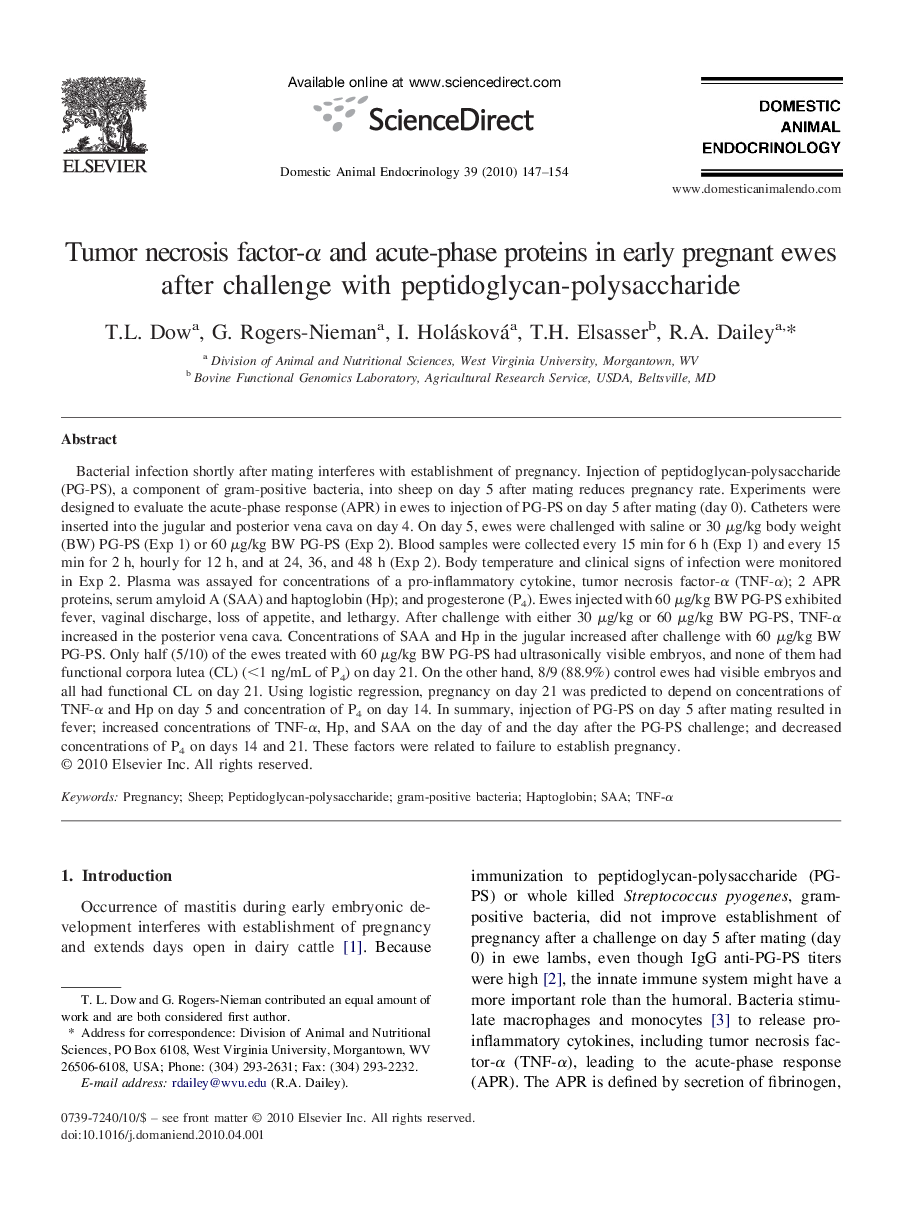| Article ID | Journal | Published Year | Pages | File Type |
|---|---|---|---|---|
| 2393751 | Domestic Animal Endocrinology | 2010 | 8 Pages |
Bacterial infection shortly after mating interferes with establishment of pregnancy. Injection of peptidoglycan-polysaccharide (PG-PS), a component of gram-positive bacteria, into sheep on day 5 after mating reduces pregnancy rate. Experiments were designed to evaluate the acute-phase response (APR) in ewes to injection of PG-PS on day 5 after mating (day 0). Catheters were inserted into the jugular and posterior vena cava on day 4. On day 5, ewes were challenged with saline or 30 μg/kg body weight (BW) PG-PS (Exp 1) or 60 μg/kg BW PG-PS (Exp 2). Blood samples were collected every 15 min for 6 h (Exp 1) and every 15 min for 2 h, hourly for 12 h, and at 24, 36, and 48 h (Exp 2). Body temperature and clinical signs of infection were monitored in Exp 2. Plasma was assayed for concentrations of a pro-inflammatory cytokine, tumor necrosis factor-α (TNF-α); 2 APR proteins, serum amyloid A (SAA) and haptoglobin (Hp); and progesterone (P4). Ewes injected with 60 μg/kg BW PG-PS exhibited fever, vaginal discharge, loss of appetite, and lethargy. After challenge with either 30 μg/kg or 60 μg/kg BW PG-PS, TNF-α increased in the posterior vena cava. Concentrations of SAA and Hp in the jugular increased after challenge with 60 μg/kg BW PG-PS. Only half (5/10) of the ewes treated with 60 μg/kg BW PG-PS had ultrasonically visible embryos, and none of them had functional corpora lutea (CL) (<1 ng/mL of P4) on day 21. On the other hand, 8/9 (88.9%) control ewes had visible embryos and all had functional CL on day 21. Using logistic regression, pregnancy on day 21 was predicted to depend on concentrations of TNF-α and Hp on day 5 and concentration of P4 on day 14. In summary, injection of PG-PS on day 5 after mating resulted in fever; increased concentrations of TNF-α, Hp, and SAA on the day of and the day after the PG-PS challenge; and decreased concentrations of P4 on days 14 and 21. These factors were related to failure to establish pregnancy.
